Filling the Gap: AMOLED and LCD from 2010 to 2012
by Joshua Ho on July 26, 2014 6:00 AM ESTHTC Desire HD
The next device we’ll look at is the Desire HD. LCD has always been more mature than AMOLED, so it would make sense for the improvement over the past four years to be much less. However, it seems that the Desire HD’s display is a far cry from today’s smartphone displays. While not as grating as the effects of PenTile on the Galaxy S, the low resolution is still quite obvious on this display. Careful examination shows quite a bit of aliasing, but from a distance it isn’t too obvious. The other issue here is the viewing angle stability. Much like the Xperia Z1s, the display rapidly washes out towards homogenous white with increasingly extreme viewing angles. This is likely due to the same *VA display technology used in both, although that’s about where the similarities end. There’s also no display lamination so reflectance is quite high, subjectively speaking.
As seen by the brightness graph, the Desire HD’s display is incredibly dim. I suspect this was done to try and keep battery life in check as the Desire HD was rather notorious for poor battery life. Contrast is also rather dismal, but I suspect this is partially due to the lack of dynamic contrast or similar mechanisms to artificially boost contrast values. The low brightness may also be due to the sheer age of the device.
In grayscale, the Desire HD is also rather poor. Although things aren’t quite as bad as the Galaxy S, they aren’t very good either. I suspect that the excessive green/blue in these devices was a method of boosting peak brightness, although by the Sensation it seems that HTC had clamped down white point to some extent.
In the saturation sweep, the Desire HD is eerily reminiscent of the One (M8), although this is mostly due to the rather extreme blues produced. The display exceeds sRGB by a certain amount in every sweep, and while the error here is relatively low, such error tends to magnify a great deal in the ColorChecker test.
It turns out that this is exactly what happens. Relatively acceptable error does become unacceptable in the ColorChecker. In reality this display is likely to be inaccurate for any color-sensitive use case, and color reproduction is unlikely to be close to the original image. It’s definitely better than the Galaxy S for color accuracy though.


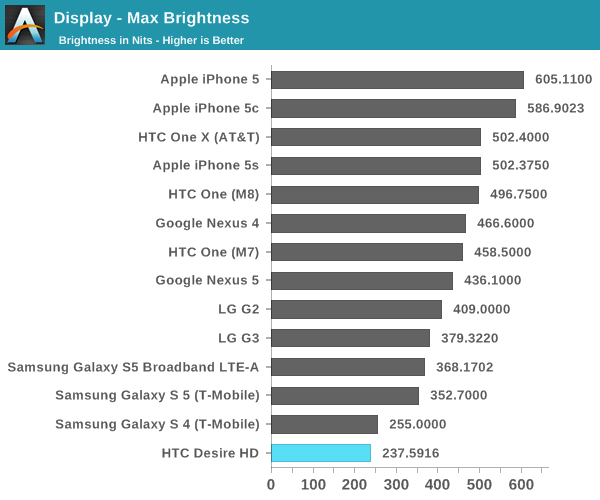

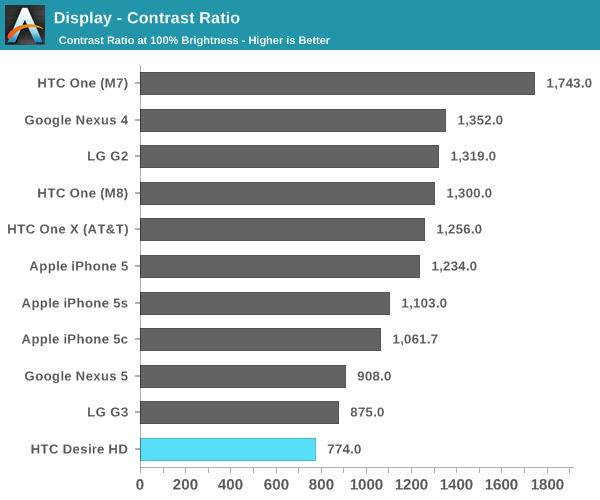
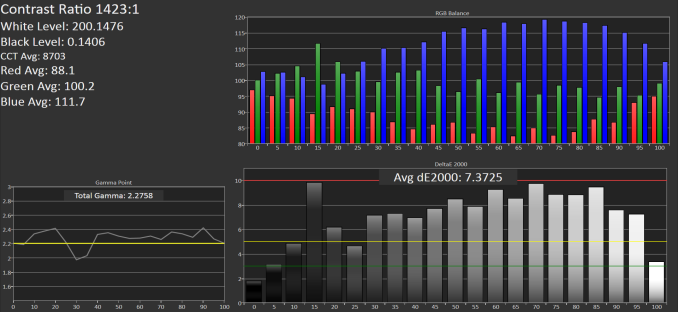
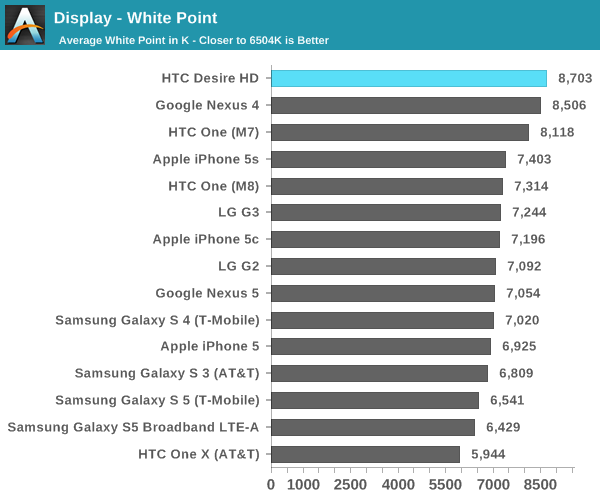
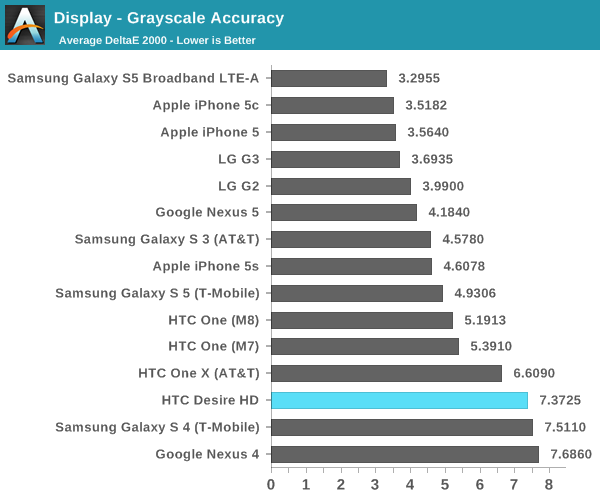
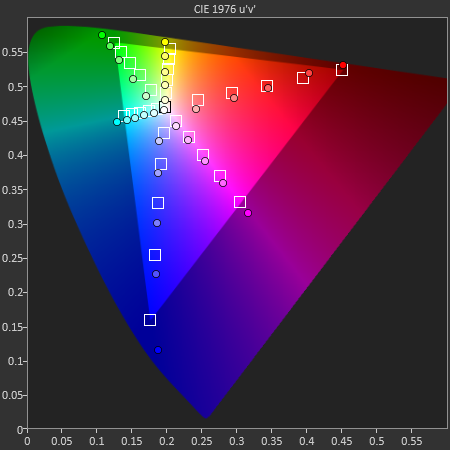
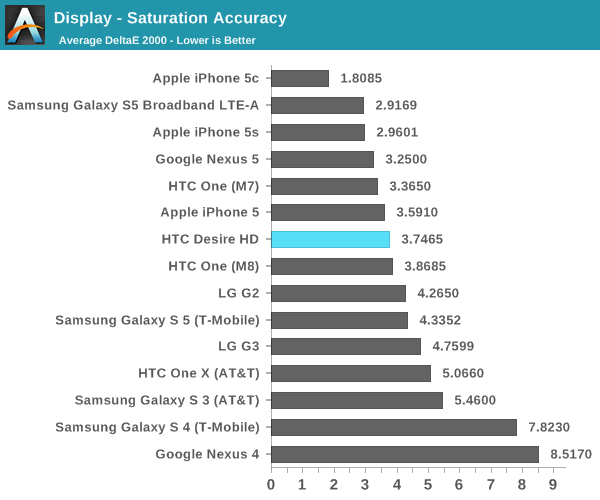

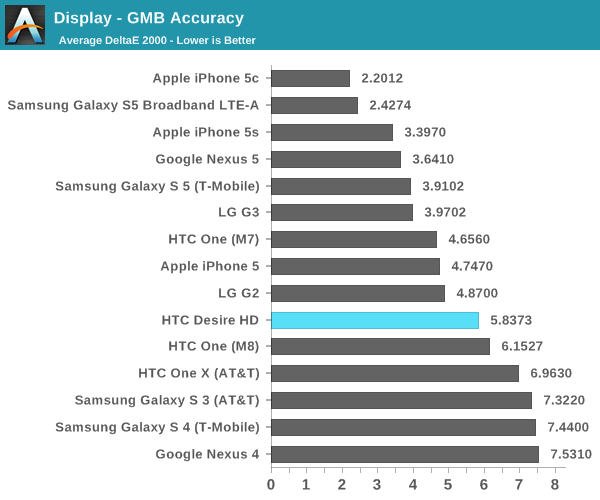








72 Comments
View All Comments
kokono - Monday, July 28, 2014 - link
I still have an Athlon64 X2, system with nForce chipset, still going strong,it would be nice to see some new tests..
Orenj - Saturday, July 26, 2014 - link
Having just retired my Rezound for an Xperia Z1 Compact (another 4.3" 720p--yay for phones that actually fit in your pocket!), I can vouch for the fact that the Rezound had a great display; the z1c, while generally good, is noticeably less accurate in color at brighter settings. Unfortunately, neither is bright enough to be usable outside in the sun here in Tucson... still waiting for fast color e-ink. Oh yeah, and the Rezound had atrocious battery life even when new; the z1c is a dream in comparison.scy1192 - Saturday, July 26, 2014 - link
Upgraded from the Rezound to the LG G3. With all the poo-pooing the display got I was worried it would be worse than my Rezound, but I'm glad that it turned out to be better all-around. It really did have a great display for the time.HangFire - Saturday, July 26, 2014 - link
Thank you for filling in the gaps, and yes some of us do care, maybe I'm just one of the 3.5 that do. Also I never realized HTC released a "Thunderbolt 2" (aka Rezound) wow it's a good thing they gave it more than one name. By November 2011 no one wanted anything to do with anything called Thunderbolt! I recall my original Tbolt had what seemed to be a very nice display, but could not compare to my better half's AMOLED in sunlight. That didn't bother me too much, but the battery life and lack of a modern Android O/S sure did. I wonder how it compares to the Rezound et al, but it's all academic now, at least my M7 rocks!SunLord - Sunday, July 27, 2014 - link
Unless these are basically never used phones wouldn't it be kinda pointless to test the screen on an Amoled display due to how they wear out after a few years?mkozakewich - Sunday, July 27, 2014 - link
Now that they're testing this, they can do an "after three years" test on models like the S3 or iPhone 5.I agree the tests on the older phones don't mean as much, but then, people aren't going out and buying them all that much, either. It's still important historical data about the progress of these technologies.
Icehawk - Sunday, July 27, 2014 - link
What was the point of this in 2014?HangFire - Monday, July 28, 2014 - link
The industry keeps telling us they're getting better, but it isn't always so.AnnonymousCoward - Monday, July 28, 2014 - link
Thanks for doing this review, so I can actually compare my current phone with the latest.Peichen - Tuesday, July 29, 2014 - link
Early Android phones are crap. Poor display, cheap build, laggy and small battery. The only thing keeping it afloat is the huge marketing budget.Android phone from the Spring 2013 cycle on are much better and closer to iPhone in general quality. Screens are on par with iPhone except color calibration. Build quality on some models improved a lot with better parts. Lag still there but mitigated with fast SOC. Battery life are on par except the phone have to be big to accommodate the big battery.